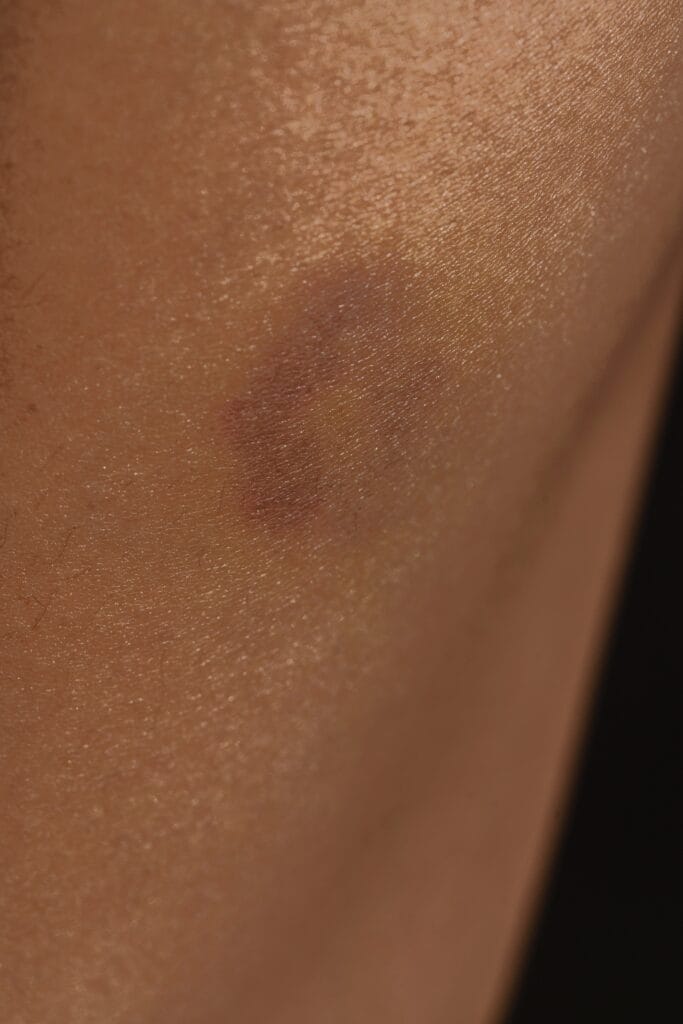
Brown spots on the legs and feet can be a cause of concern for many individuals. These spots, also known as hyperpigmentation, can affect the appearance of the skin and lead to self-consciousness. Understanding the causes, treatment options, and preventive measures can help individuals address this issue effectively. In this blog post, we will delve into the world of brown spots on legs and feet, providing you with valuable insights to help you deal with this condition.
1. What are Brown Spots on Legs and Feet ? :
Brown spots on the legs and feet are patches of skin that have a darker pigment than the surrounding areas. These spots can vary in size, shape, and intensity of color. They can be flat or slightly raised, and their texture may differ from the surrounding skin. Brown spots on the legs and feet can be caused by various factors, including exposure to sunlight, hormonal changes, and inflammation. Identifying the underlying cause of these spots is crucial in determining the appropriate treatment method.
2. Causes of Brown Spots on Legs and Feet :
The development of brown spots on the legs and feet can be attributed to several causes. One of the primary factors is excessive sun exposure, which stimulates the production of melanin, the pigment responsible for skin color. Hormonal changes, such as those that occur during pregnancy or while taking hormonal medications, can also lead to the formation of brown spots. Inflammation resulting from skin injuries, insect bites, or certain medical conditions can trigger hyperpigmentation as well.
3. Common Conditions Associated with Brown Spots :
3.1 Sunspots and Age Spots Sunspots, also known as solar lentigines, and age spots are common types of brown spots on the legs and feet caused by prolonged sun exposure. They typically appear on sun-exposed areas and are more prevalent in older individuals.
3.2 Melasma Melasma is a condition characterized by brown or grayish-brown patches on the face, but it can also affect other parts of the body, including the legs and feet. Hormonal changes, particularly during pregnancy or due to the use of hormonal contraceptives, can trigger melasma.
3.3 Post-inflammatory Hyperpigmentation Post-inflammatory hyperpigmentation occurs as a result of skin inflammation or injury, such as acne breakouts, cuts, burns, or rashes. These spots can occur on any part of the body, including the legs and feet.

4. Treatment Options for Brown Spots :
4.1 Topical Treatments : Topical treatments, such as creams and lotions containing ingredients like hydroquinone, retinoids, or azelaic acid, can help fade brown spots over time. These products work by inhibiting melanin production or promoting cell turnover.
4.2 Chemical Peels : Chemical peels involve the application of a chemical solution to the skin, which exfoliates the outer layer, revealing fresher, less pigmented skin. Superficial or medium peels can be effective in reducing the appearance of brown spots on the legs and feet.
4.3 Laser Therapy : Laser therapy uses intense pulses of light to target and break down the excess pigment in the skin. This treatment option is highly effective for brown spots, and it stimulates collagen production, improving the overall texture and appearance of the skin.
4.4 Cryotherapy Cryotherapy involves freezing the brown spots using liquid nitrogen, which destroys the excess pigment. This treatment is commonly used for small, isolated spots on the legs and feet.
5. Preventive Measures for Brown Spots :
5.1 Sun Protection One of the most crucial preventive measures for brown spots is protecting the skin from harmful UV rays. Wearing sunscreen with a high SPF, seeking shade, and using protective clothing can help minimize sun damage.
5.2 Skincare Routine Maintaining a consistent skincare routine can help prevent the formation of brown spots. Gentle cleansing, exfoliation, and moisturizing can keep the skin healthy and reduce the risk of hyperpigmentation.
5.3 Diet and Nutrition A balanced diet rich in antioxidants and vitamins can support skin health and minimize the risk of brown spots. Including foods like fruits, vegetables, and fish in your diet can provide essential nutrients for healthy skin.
6. When to Seek Medical Attention :
In most cases, brown spots on the legs and feet are harmless and do not require medical attention. However, if you notice changes in the size, shape, color, or texture of the spots, or if they are accompanied by other symptoms like itching, bleeding, or pain, it is advisable to consult a dermatologist for proper evaluation and diagnosis.
Brown spots on the legs and feet can be a cosmetic concern for many individuals, but they can be effectively managed with the right knowledge and treatment. Understanding the causes, seeking appropriate treatment options, and implementing preventive measures can help minimize the appearance of brown spots and promote healthier skin. Remember to protect your skin from the sun, maintain a consistent skincare routine, and consult a dermatologist if you have any concerns. By taking these steps, you can regain your confidence and achieve a smoother, more even-toned complexion.





